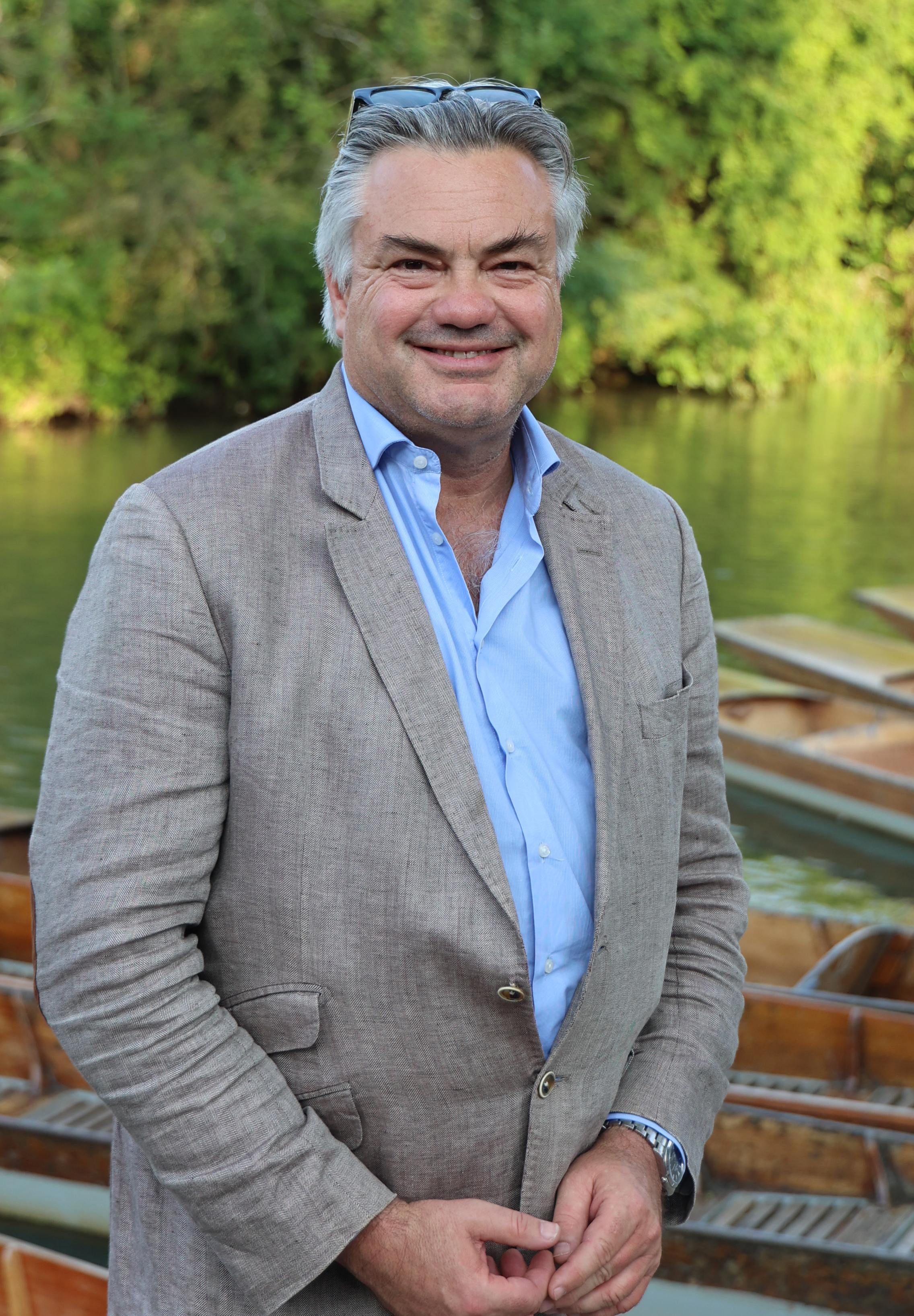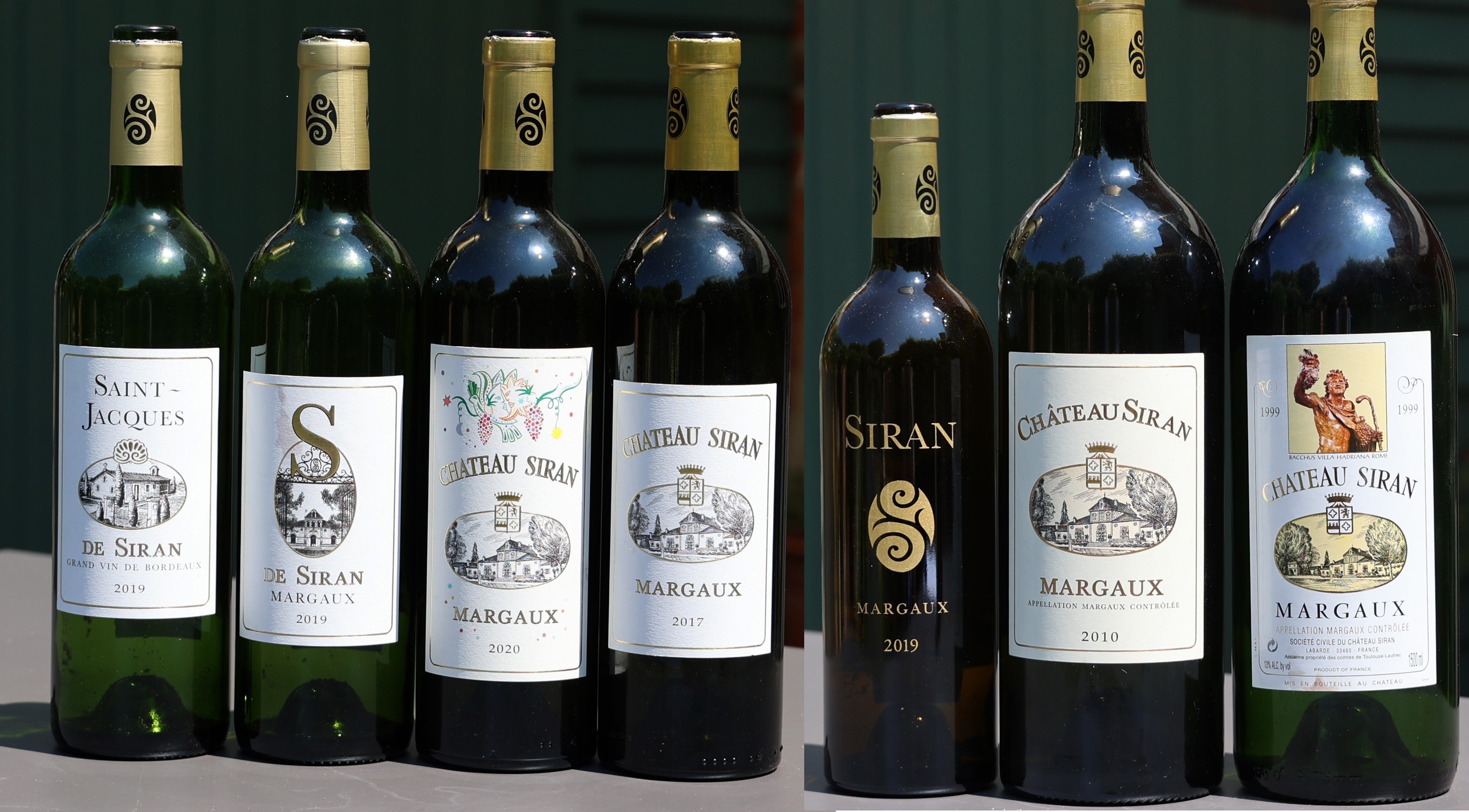 The OWC holds three sorts of tasting. The first introduces members to wines they are unlikely to have tasted. The second gives us wine that we could never afford to drink at home. The third educates us. This one sat firmly in the third category: it was a vertical tasting of the wines of Château Siran, a distinguished estate in the Margaux appellation of Bordeaux. It was presented by its owner, Éduard Miailhe, who is chair of the association of Margaux vineyard owners – we were in good hands!
The OWC holds three sorts of tasting. The first introduces members to wines they are unlikely to have tasted. The second gives us wine that we could never afford to drink at home. The third educates us. This one sat firmly in the third category: it was a vertical tasting of the wines of Château Siran, a distinguished estate in the Margaux appellation of Bordeaux. It was presented by its owner, Éduard Miailhe, who is chair of the association of Margaux vineyard owners – we were in good hands!
EM started by talking about the Château, how it made wine and the market conditions today. Siran has been in his family for 169 years since it was bought from Le Comte de Toulouse-Lautrec (a relation of the painter) – his is the sixth generation of ownership. The wine is now viewed as a Cru Bourgeois Exceptionnel because it was never entered for the 1855 Bordeaux classification. This was because the classification was held under the auspices of Napoleon III and the then aristocratic owners had a low opinion of him. Today, it would probably be considered classification-worthy, but EM is a traditionalist who feels that the 1855 ranking shouldn’t be touched, even though it might mean that he could charge more for his wine.
The estate has ~30 hectares in the Margaux area (gravel- and sand-based soil) and a few hectares across the road in the Bordeaux appellation (clay-based soil). 25 hectares of the Margaux vines are for the Ch. Siran wine: the assemblage is ~45% each of cabernet sauvignon for structure and merlot for fruit, 9% petit Verdot for spice and 1% cabernet franc, followed by a year in barrels made of French oak. Five hectares of younger vines are used for the S de Siran: this second wine has more merlot, less cabernet and a shorter time in barrel. The six hectares of vines across the road are used for the predominantly merlot-based Saint Jacques de Siran (Bordeax supérieur).
EM noted that, while many top vineyards were now owned by international companies and had short-term ambitions for success, his family were there for the long term, ignoring fashions to make the best wine that they could. It was good to know that the historical traditions were being followed. EM also talked about how climate change was affecting wine production: while the rising average temperature helps with vine maturation, the staff have to cope with more frost, more hail and more extremes of heat.
He also pointed out that the en primeur market has collapsed, mainly because it is becoming cheaper for customers to buy top wines after they came on the market. A second reason is that most houses no longer have cellars for long-term storage. EM mentioned a recent study that found that the average time today between buying a bottle and opening it was one hour!
Wines 1 and 2: the 2019 vintages of St. Jacques de Siran and S de Siran
The tasting started with a comparison of these two secondary wines. The former was lighter, the latter was darker, more robust and longer; both had a touch of purple in the colour, black fruit and tannins that were starting to soften. EM assured us that both were ready for drinking – my feeling was that these were wines that needed food to be appreciated properly now.

Wines 3,4 and 5: the 2017, 2019 vintages of Ch. Siran
Perhaps my view reflected the tastes of the British, as EM noted when we moved on to the younger wines of Château Siran. He pointed out that the French like their wines a bit younger and a little more acidic than the British (the former preferred the 2020, the latter the 2019). while the American market looked more for weight than balance and favoured the 2018. Unfortunately, we couldn’t taste this because, following stellar reviews (it was a wine of the year in the USA), it had all been sold. Instead, we tasted the 2017 which was from a lighter but more approachable year. My notes comment on its relative maturity and impressive length. The younger two wines still had a touch of purple and pronounced tannins but showed length and texture.
Wines: the 2010 and 1999 vintages of Ch. Siran (from magnums)
That those wines were all still early in their maturation progress was demonstrated by the last two wines. The 2010 was fine claret with a good nose and flavour with only residual tannins; it was ready to be drunk and enjoyed. However, we only appreciated that 15 years was young for this Château when we tried the 1999. It was gorgeous and long, having a lovely mature nose, a fully developed cabernet structure and a superb velvety texture – the hallmarks of top-quality claret and a pleasure to taste. Both were however clearly still capable of further maturation: their deep red colours showed no trace of browning.
It was obvious from the non-stop questioning, the depth of EM’s presentation and the cheers at the end that the full house in the main restaurant of the Cherwell Boathouse really had had a wonderful evening. We were all grateful to Éduard for making the trip from Bordeaux to talk to us so entertainingly and it was a pleasure and a privilege to be educated about a wine as impressive as Château Siran. It just gets better and better over the decades. And further evidence for this? We saw the recent tasting notes for the vintages from the 1920s – none had died!
Jonathan Bard